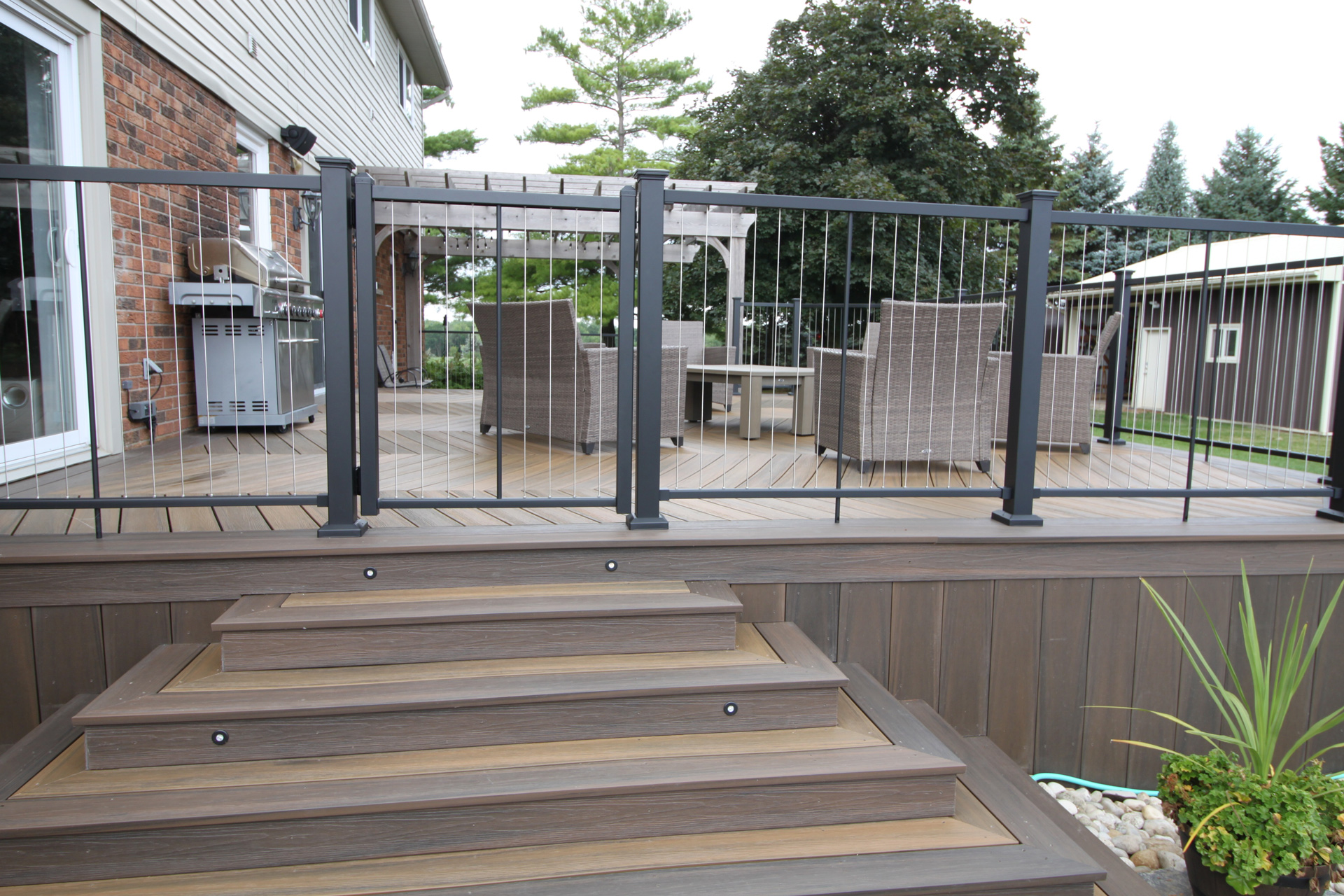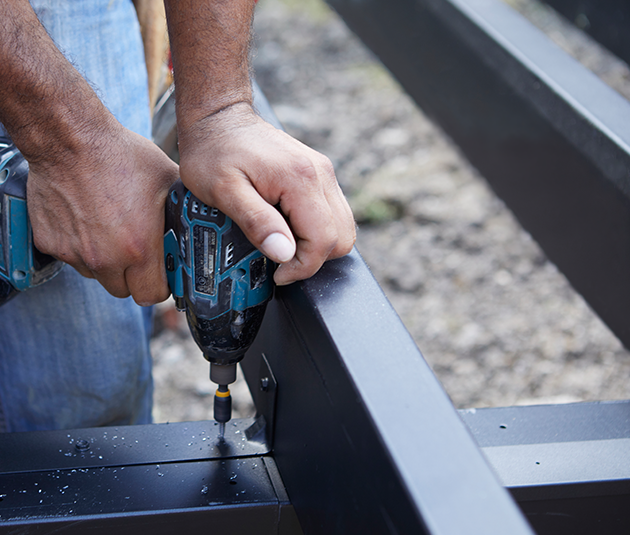╳

Get The Latest On Our Greatest
Subscribe to Our Company/Product Updates

Tuesday, September 7, 2021
A properly constructed stairway is one of the most critical elements of a deck project, providing function, safety and access to the outdoor living space beyond your deck’s perimeter.
If you plan on building new deck stairs this year, there are a few key things to consider before you pull out the hammer and nails, like what size should your deck stairs be and what's the best material to use. Knowing successful projects begin with diligent research, our decking experts address a few of the most commonly asked deck stairs questions below to help you get started on the right foot.
Q: "What size should deck stairs be?
A: According to our decking experts, the answer to this question varies, largely because each deck project has different size and performance requirements. In order to help you sift through this information and form a better idea of what size your deck stairs should be, consider these deck stair components.
With attention to these deck stair elements, it's important to note that specific code requirements can vary from state to state and city to city. For this reason, we recommend first reviewing your local building codes to ensure your stairs stay code compliant.
Alternatively, by using an engineered stair system, you can eliminate much of the confusion around sizing while avoiding serious safety concerns, like poor stringer-to-deck connections and inconsistent rises and runs. These challenges are rampant in traditional wood decks, as conventional stair construction requires deck builders to cut pieces of lumber by hand - a recipe for miscalculations.
In stark contrast Evolution steel stair system from Fortress Building Products has fixed and adjustable stair brackets that can accommodate various rise and run options. Stringer and stair trays already include blocking every 10 inches on center for railing post attachment and stair post attachment, and self-drilling screws ensure maximum strength and security at connections. This level of innovation ensures a structurally sound deck system
Q: Do deck stairs have to land on concrete?
A: If you want a set of safe and secure deck stairs that meet code requirements, often times concrete is the most popular option. However, if you don't regularly pour concrete, there are a few other code-meeting hardscape materials to consider for landing options, including:
While both of these options can save time and eliminate the mess associated with mixing and pouring concrete, the most important thing to note is that all products, regardless of their makeup, need to have solid foundation and good drainage in order to provide a level surface and stable footing to rest the staircase on.
Q: What is the best material for deck stairs?
A: Of all the materials used to build deck stairs, pressure treated lumber has traditionally been the most popular. However, as wooden boards age, they succumb to mold and mildew and are more likely to shrink and warp. Oftentimes this results in uneven boards and loose fasteners, which consequently become safety hazards.
To sideline these issues, again consider framing your deck stairs with steel. Designed for low-maintenance and enhanced durability, a steel stair system provides safe functionality, as it's invulnerable to warping, rot and insect damage. Plus, this long-lasting material is compatible with any type of decking or deck framing.
Looking for more information on deck stairs? Fortress Building Products is here to help. Check out our installation videos for a simplified stair-building process.


Search